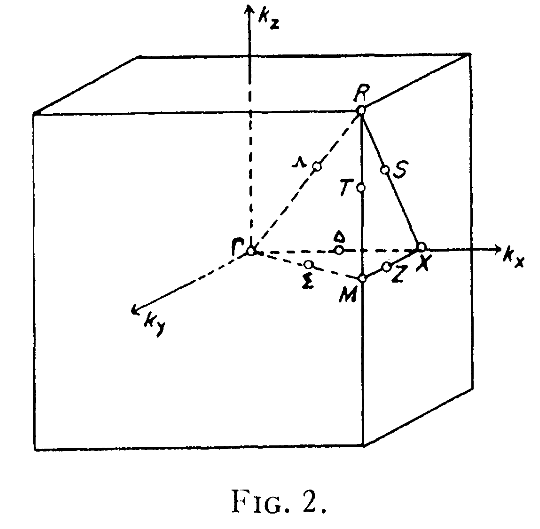| MWF 12-12:50 PM | OPL 107 | http://www.wfu.edu/~natalie/s09phy745/ |
| http://www.wfu.edu/~ecarlson/groups/ |
| Instructors:
Natalie Holzwarth
Eric Carlson |
Phone:758-5510 | Office:300 OPL | e-mail:natalie@wfu.edu |
| Phone:758-4994 | Office:306 OPL | e-mail:ecarlson@wfu.edu |
Briefly skim Chapter 1 and read Chapter 2 in Tinkham. This problem has 6 parts and covers material from Lectures 1 & 2. It is due Wed. Jan. 21, 2009.
Continue reading Chapter 3 in Tinkham. For the following matrices ![]() ,
find the similar transformation
,
find the similar transformation ![]() which creates the related diagonal matrix
which creates the related diagonal matrix
![]() :
:



Continue reading Chapter 3 in Tinkham.

Continue reading Chapter 3 in Tinkham.


Continue reading Chapter 3 in Tinkham. This problem is due Fri. Jan. 30, 2009.
Finish reading Chapter 3 in Tinkham. This problem is due Mon. Feb. 2, 2009.
Finish reading Chapter 3 and start Chapter 4 in Tinkham.
 |
(1) |
| (2) |
Start reading Chapter 4 in Tinkham. This problem is due Fri. Feb. 6, 2009.
A perfect cube has the following 48 symmetry elements designated as transformations on a general point with cartesian coordinates x,y,z with respect the origin at the center of the cube.
Continue reading Chapter 4 in Tinkham. This problem is due Mon. Feb. 9, 2009.

Continue reading Chapter 4 in Tinkham.


Continue reading Chapter 4 in Tinkham. This problem is due Fri. Feb. 13, 2009.
Physics 745 - Group Theory
Homework Set 12 Due Monday, February 16
Note: the lecture and homework set was prepared by Prof. Carlson.
1. Diamond is a version of carbon. The position of the carbon atoms takes the form
![]()
where
d = 356.683 pm, ![]() are arbitrary integers,
and
are arbitrary integers,
and ![]() takes on the following
eight values:
takes on the following
eight values:
![]()
Thus there are eight carbon atoms per cell of size d3.
(a) For what values of ![]() will
will ![]() be a translation
vector; i.e., if there is a carbon atom at r, there will always be a carbon atom at
be a translation
vector; i.e., if there is a carbon atom at r, there will always be a carbon atom at ![]() ? To make your answer
finite, only include values with
? To make your answer
finite, only include values with ![]() .
.
(b) Find primitive vectors a, b and c such that all translation
vectors take the form ![]() , where
, where ![]() are integers. Demonstrate it explicitly for those vectors
you found in part (a) (which will probably be trivial), and also for the three vectors
are integers. Demonstrate it explicitly for those vectors
you found in part (a) (which will probably be trivial), and also for the three vectors ![]() ,
, ![]() and
and ![]() .
.
(c) What are the lengths of these
vectors ![]() and the angles between
them,
and the angles between
them, ![]() ?
?
Continue reading Chapter 4 in Tinkham. This problem is due Wed. Feb. 18, 2009.
Continue reading Chapters 4 and 8 in Tinkham. This problem is due Wed. Feb. 25, 2009.
Consider the following two examples of crystals which have the fcc (Oh5) structure. For each, find an expression for their structure factors S(Δk). For evaluating the atomic structure factors, you may use the expression
| Real space lattice | Reciprocal space lattica |
| T1=(a/2)*(x+y) | G1=(2π/a)*(x+y-z) |
| T2=(a/2)*(x+z) | G2=(2π/a)*(x-y+z) |
| T3=(a/2)*(y+z) | G3=(2π/a)*(-x+y+z) |
Continue reading Chapters 4 and 8 in Tinkham. This problem is due Fri. Feb. 27, 2009.

Continue reading Chapters 4 and 8 in Tinkham. This problem is due Mon. Mar. 2, 2009.